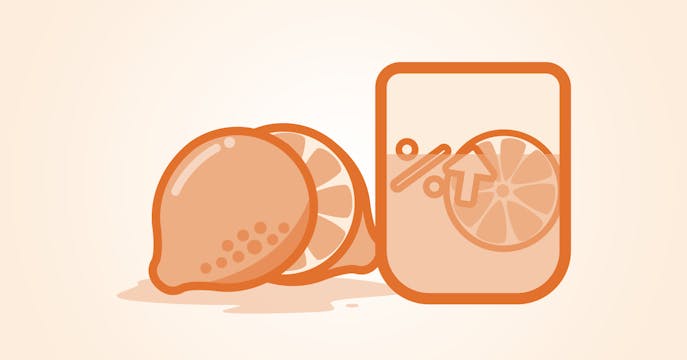Lowest Mortgage Rate in Canada. Starting from 2.49%
Your Fall Home Maintenance Checklist
Leaves are falling (and filling up your eaves and beds and lawn).
Fall is a colourful hint that winter is on its way. Take on these home tasks to protect your investment before the white stuff flies.
Originally posted Oct. 2022
First, reach for the plaid
Something about the checkers just feels like Fall.
Flannel, fleece or good-old cotton, it'll help you get in the wood-chopping, leaf-clearing spirit for these home tasks — and you'll feel even better about protecting your investment (your home) to enjoy in the colder months ahead.
Water your lawn and trees, then drain the system
Your lawn and trees still need water during the fall to help survive winter conditions. But make sure to drain and shut off your watering equipment and sprinkler system before the freezing temps start.
- Give lawns, trees and bushes a good drink (careful not to overwater). Then stop cutting grass (but a bit of growth before winter temps helps protect roots).
- Check outdoor hoses and spigot connections for leaks before they're put away or shuttered for the season.
- If you discover a leaking spigot, take care of it right away to prevent a burst pipe inside your house later.
- Drain hoses, blow out and turn off sprinkler systems, and close interior waterlines to outdoor spigots (if you can)— to prevent trapped water from freezing and expanding.
- Don't forget your rain barrels! Clean them out (check with your local gardening centre for best practice) to prevent bacteria and mould, seal them off and redirect downspouts.
- Remove drained hoses and tuck them away to save them for next spring.
Clear away the leaves and tangles
Dead leaves can act as an impenetrable barrier — plugging things up, trapping water and preventing drainage. They can also attract pests looking for winter cover.
- Check on your gutters and eavestroughs to clear out falling leaves and other debris, in case a storm happens with little warning.
- Use an old plastic spatula to oust leaves and guck from eaves and gutters without scratching them (be careful on that ladder!)
- Window wells and sills can act as a water-entry point if clinging debris attracts or holds rain or melting snow.
- Critters love to hibernate in areas full of dead leaves and plants. If you've had past pest problems, you may want to clear beds, but leaving something behind can also provide winter cover for essential pollinators. Ensure that plant, bush and tree roots are still protected (mulch can help).
- Clear out walkways, along your foundation, deck areas, and around utilities.
Stow away outdoor equipment, furniture and toys
Save yourself some cash next spring — by covering or stowing your stuff to protect against winter wear.
- Those patio lanterns and heaters? Fixtures left in the elements can break down, especially connections or wires — and may not work when you need them or can become a fire hazard.
- Be extra careful storing propane tanks — check with your local fire department on the safest way to deal with them over winter.
- Are you a winter griller? Invest in a good BBQ cover and check gas/propane connections. Keep your eye on them for signs of leaks or wear.
- Cover or store toys, outdoor furniture and lawn equipment to protect them from freezing temps and snow.
- Don't forget your patio umbrellas, to keep them colourful and working for next spring.
Look out below! Check trees and bushes
Your trees and bushes may have reached new heights or suffered breaks from summer storms. Strong winds, freezing rain and heavy snow may dislodge branches or break trees — which may cause damage or present danger below.
- Eyeball your roof, utilities, fence, and power lines to spot the potential for damage or fire risk if branches break or fall.
- Have branches grown into walkways? If they're blocking the path, it may cause icy slips, exposing you to legal action.
- Will heavy snow bend branches and put weight (and lots of water) against your roof or house?
- Carefully trim and cull now, or hire a professional to safely reduce the 'tree' risk.
Seal the cracks
After the summer heat and rain, inspect for cracks or signs of leaks that may get worse with freeze/thaw cycles.
- Check around your foundation, windows and doors. See cracks? Grab the caulking gun and seal them now to stop intrusions over the winter and keep things dry and warm.
- Clear debris around your home exterior to uncover any issues you weren't aware of.
- Do a visual inspection of your roof. Are shingles curling or missing? Are eavestroughs cracked or showing signs of leaks? You may decide work needs to be done before the snow falls.
- Is a window cloudy? Broken seals mean you'll have less insulation from the cold (plus an impaired view). Replace them before temps dip.
Can your home handle the heat?
Your furnace has likely been taking some time off (for good weather). Is it in prime condition for the home-heating ahead? Other items, like your attic insulation and hot water heater, may also need attention to help prevent winter fails.
- Fall is a great time to have your furnace cleaned and inspected — and replace filters to improve air flow and reduce dust.
- Don't forget the ducts — up to 20% of heated air can escape on the way to rooms if not properly sealed.
- It's also a good time to inspect your hot water tank and humidifier for worn parts and faulty valves or temperature regulators, so that they don't give up when the temps go down.
- Wrap your hot water tank with an approved insulation blanket to reduce standby heat loss and lower your heating costs.
- Check up on your attic insulation. Ensure the corners are still covered (not shifted by high winds) and have a professional assess if more should be added to help reduce your energy bill.
Inspect your chimney, fireplace and detectors
- Before using your fireplace on the first frosty day, get ahead of the bookings and have yours inspected and cleaned early, whether wood-burning or gas.
- Wood-burning fireplaces and chimneys may have creosote buildup, a significant fire risk. And gas lines and valves should also be inspected to check for leaks and proper ignition.
- Be sure to close the damper on your chimney when not in use, so that cooler air isn't drawn into the house.
- Make a habit of checking your smoke/fire and carbon-monoxide detectors twice annually — installing new batteries (if needed) and testing the alarms.
- Need wood for winter coziness ahead? Make sure to don safety glasses and gloves if chopping yourself, and store wood above ground, sheltered from the elements.
Get ready to clear the snow and ice
It may seem nicer now, but it's coming. Make sure you have the right equipment to prevent last-minute scrambling or worse, a safety issue.
- Get your brooms and shovels out for easy access, and ensure they're ready to handle the task (no worn-down edges or cracks). Save your back by investing in a more ergonomic shovel.
- Have a snow blower? Fire it up to make sure it's in working order, too.
- Stock up on gravel and salt now, before the rush.
- Consider hiring a clearing service in the fall to get ahead of the (winter) pack.
- When snow does fall, clear accumulation from areas such as patios, decks, walkways, or around steps or retaining walls to help prevent damage and ice build-up as the season transitions.
- Keep an eye on your roof for early signs of leaking or icicles forming (which indicate your attic circulation may need attention).
Review your security system
Whether expensive (full monitoring) or cheaper (a big, loud dog) — it's a good idea to take stock of your home security system, especially if you'll spend some holiday time away.
- Do you need to add a door or window to your surveillance plan?
- Installing a doorbell camera, keyless entry pad, or outdoor motion-sensor lights is easier in warmer weather.
- Check the batteries on interior sensors and dashboards.
- Ensure all your door and window locks are working, and take the time to get extra door keys made for family members. Placing one in a safe and hidden nook outside can help protect against having to call a locksmith or force entry into your own home.
- Install security bars or another deterrent on ground-level accessible windows and patio doors.
- Have a big, loud dog? Give it a big hug. It works hard to protect you and your family (even if it doesn't know it).
Your garage and shed need attention, too.
Is your garage your palace? Sheds also play an important role in keeping your (sometimes expensive) toys and equipment safe during extreme weather.
- Just like your house — check the inside, outside and roof for cracks, signs of leaks, or other damage.
- Sweep the floors (and bugs) out after summer use.
- Garage door looking rusty or saggy? Sand and paint rusty spots and tighten screws and bolts to extend its use and keep it ship-shape for winter.
- Is your garage door or opener near its end? That end may happen when it's coldest and least convenient to fix. Ever tried to get a maintenance call for a stuck door when it's -30? Consider getting it done sooner.
- If you have a lot of stuff stored, check inside bins and behind and underneath stored items for pests or critters to avoid a nastier surprise next spring.
- Make sure the person-door closes and locks properly.
Please note that the above tips are considered best home-maintenance practices; however, details and results may vary.
Does your mortgage need maintenance?
We have great tips to help you save more, or we can easily help you check your details for a refinance or upcoming renewal.
Any time of year, we have your best rates and mortgage fit. We're here to help!
Fall into your best rate.
More great tips

Your Winter Home Maintenance Checklist
Our Canadian winter's coming. Is your home ready? Here are some helpful tips.

How to make the most of higher mortgage rates
Make (mortgage) lemonade by investing in guaranteed savings.

Mortgage Title Fraud? Here's What to Look For
Protect yourself against the dangers of title fraud and identity theft.

